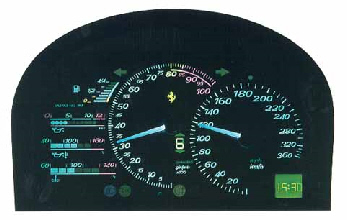Electro-luminescent materials produce light when they are connected to an electrical current. They are available in thin sheets and in cables.
Electro-luminescent sheets are used as the back light of LCD screens and other electronic devices. LED technology has advanced in recent years and electro-liminescent displays are not as popular as they once were for some applications.
Some of the advantages of electro-luminescent materials are:
• They produce a bright and even light source
• Low power (batteries last longer)
• A range of colours are available
• They can be cut to any shape required




A shape memory alloys are metals that have been engineered to remember shape even after it has been bent.
They are also known as:
• SMA
• Smart metal
• Memory alloy
• Muscle wire
A piece of SMA can be bent into any shape like any other type of wire. But, when it is heated up it will automatically go back to its original state because it has a memory of its original shape.
Passing a current through a piece of wire causes it to heat up. Therefore if a piece of SMA is bent out of shape passing a current through it will make it go back to its original shape. The diagram to the right shows a SMA formed in the shape of a spring in the factory. The weight pulls it out of shape but when the battery is connected it heats up and the spring contracts, lifting the weight up. When the battery is disconnected the wire cools and the weight stretches the spring out again.
These wires and springs can be used liked muscles to create movement of mechnical arms and hands.


Optical fibres are thin rods of clear flexible plastic.
If a light is shone down one end of the fibre it is transmitted by internal refraction and comes out of the opposite end. They are used to transmit signals and data over long and short distances in the place of electrical cables. Because they rely on light the signals they transmit are not affected by electrical interference.
LEDs or lasers are usually used as the light source and phototransistors are used to detect the light at the receiver.
Games consoles have an optical output which allows them to be connected to an amplifier connected to speakers instead of using the conventional electrical cable. Because it is and optical interface, the quality of the signal is not degraded by interference and therefore the sound quality is much better. Optical fibres can also be used in light displays as shown below:



Piezoelectric materials can generate electricity when they are compressed, this is called the piezoelectric effect. This effect also works the other way around and can change its shape very slightly when a voltage is applied to it. A piezoelectric transducer can convert tiny vibrations into an electrical current.
They could be used in security alarms in shops to detect when items have been moved. Piezoelectric transducers are used as the speakers in musical greeting cards.
The circuit below shows how a piezoelectric transducer can be used with a thyristor to act as a vibration activated alarm. The transducer could be fitted to a shelf where a valuable item needs protection. When the transducer detects any vibration it creates a tiny current which flows into the gate of the thyristor, this latches the thyristor on causing current to flow through the buzzer. The buzzer will only switch off when the PTB (push to break) switch is pressed which interrupts the current flowing between the anode and cathode of the thyristor causing it to reset.

